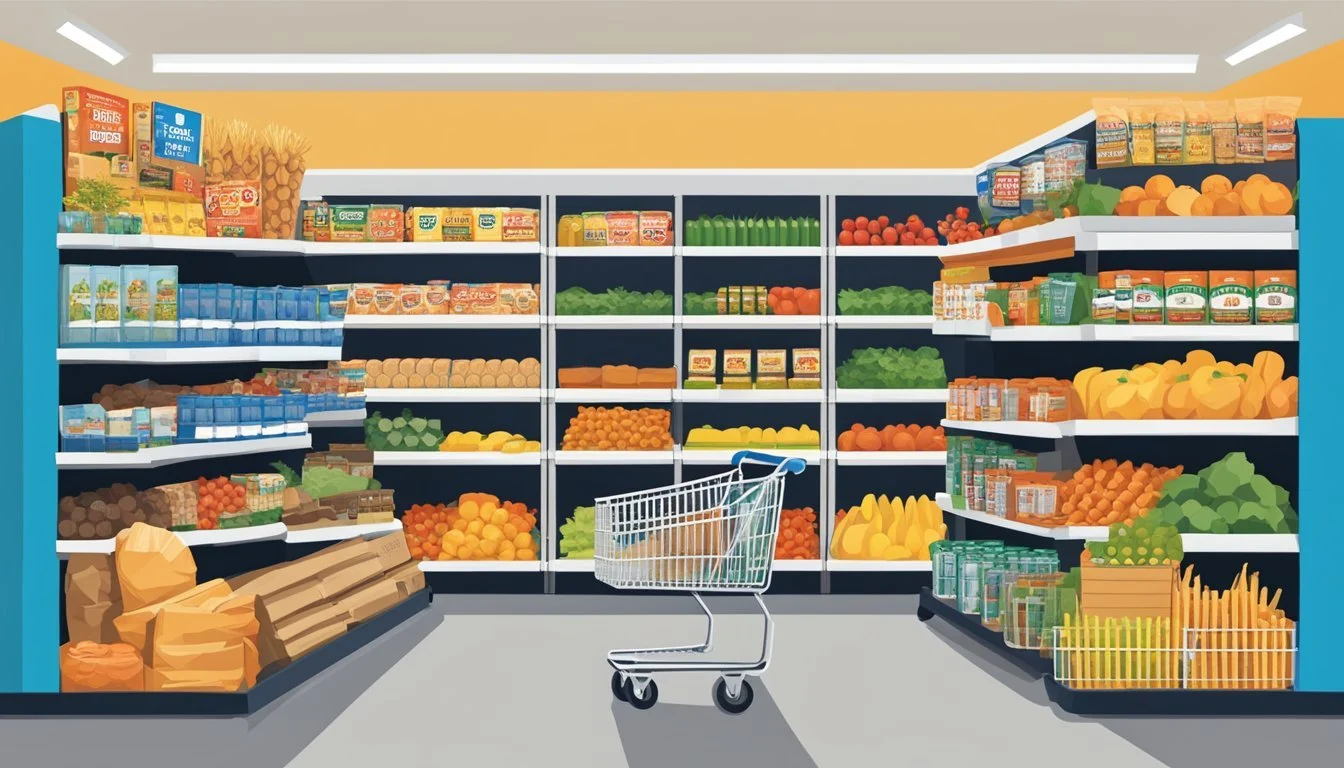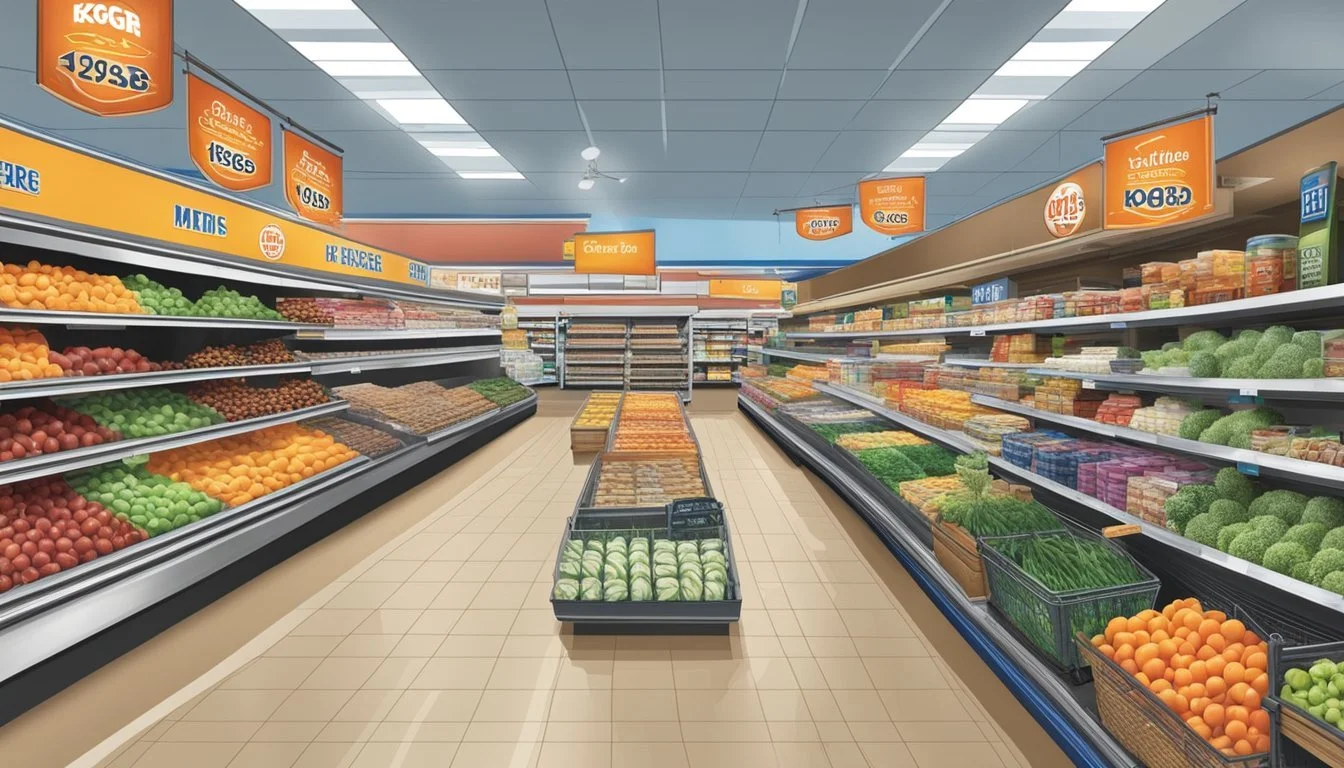Is Kroger Cheaper Than H-E-B?
Comparing Grocery Store Prices
Part of Our Grocery Store Guide with Details on Kroger Prices and H-E-B Prices
When comparing grocery store prices, consumers often question whether Kroger or H-E-B offers better value for their money. Kroger, with its extensive presence across 35 states and a diverse range of nearly 70,000 products, is known for its variety and competitive pricing. In contrast, H-E-B operates primarily in Texas, with a more limited selection of around 18,000 items but prides itself on quality and local sourcing.
Determining which store is cheaper depends on various factors, including product selection, geographic location, and the customer's shopping habits. Kroger's larger scale and broader reach might imply more frequent promotions and discounts, yet H-E-B's commitment to regional goods could result in lower prices for local products. Each store has developed a loyal customer base by catering to their specific preferences in terms of cost, quality, and availability.
While the answer to which establishment is less expensive may not be a simple one, shoppers will find that both Kroger and H-E-B offer competitive prices that cater to different market segments. Price-conscious consumers might lean towards Kroger for everyday savings, while those who value quality and locally-sourced goods might find H-E-B to be a better fit for their shopping needs.
Overview of Kroger and H-E-B
When comparing Kroger to H-E-B, one is looking at two of the largest supermarket chains in the United States, each with distinct histories and market footprints.
Historical Background
Kroger, founded by Bernard Kroger in 1883, is one of America's oldest and largest grocery retailers. With over a century in the grocery business, Kroger has grown significantly and adapted to the ever-changing retail landscape. Alternatively, H-E-B began in Texas in 1905 when Florence Butt opened the C.C. Butt Grocery Store. H-E-B remains a Texas-based and family-owned business, sustaining its strong regional identity amidst the competitive supermarket industry.
Store Count and Locations
Kroger operates approximately 2,800 stores in 35 states across the country. This makes it one of the most accessible supermarket chains in the nation. H-E-B maintains a more focused presence, with around 340 stores located primarily in Texas and northeast Mexico, positioning it as a key player in its regions of operation.
Market Presence and Expansion
Kroger boasts a vast market presence, serving millions of customers and featuring a wide variety of products. As a testament to its size, Kroger has stores in many states and has taken steps to expand services such as grocery delivery. H-E-B, though smaller in store count, is a dominant market force in Texas and is known for its quality products and customer loyalty. Both companies actively seek expansion opportunities, with H-E-B selectively adding stores and enhancing services within Texas and adjacent markets, while Kroger continues to enhance its extensive network throughout the United States.
Product Variety and Quality
When comparing Kroger and H-E-B, shoppers will find distinct differences in product variety and quality, each catering to varied consumer needs. Kroger boasts an impressive product range, while H-E-B focuses on the quality and local sourcing of their offerings.
Brands and Private Labels
Kroger operates with a significant number of private labels, including the Kroger Brand, which offers a spectrum of products at competitive prices. These house brands provide an alternative to national brands, often at a lower cost. In contrast, H-E-B also features its own private labels, recognized for high-quality products that often incorporate local flavors and preferences.
Meat and Produce Selection
Consumers prioritize fresh produce and quality meat selection differently. Kroger offers a wider variety of meat and produce, which caters to a broader audience. H-E-B, while having a smaller selection, tends to focus more on the quality of their meats and produce, with attention to providing fresh, locally-sourced options.
Organic and International Offerings
Organic Products are in demand for their health benefits and environmentally friendly aspect. H-E-B provides a range of high-quality, often locally sourced organic products. Kroger, on the other hand, offers a vast array of international and organic goods under its Kroger Brand and other national brands, ensuring that shoppers with different preferences find what they need.
Pricing and Affordability
When choosing between Kroger and H-E-B, customers consider both the pricing and the value they receive. This section dives into the nuances of each store's pricing strategies and how they translate to affordability for the consumer.
Comparison of Overall Prices
Kroger generally presents lower average prices across various product categories when compared to H-E-B. The difference in pricing can be significant, especially when taking into account the larger spectrum of items offered by Kroger. With nearly four times as many products available, shoppers at Kroger enjoy a broad selection at competitive prices.
Discounts and Savings Opportunities
Kroger is known for its numerous discounts and savings programs. They offer a robust loyalty program that provides personalized deals and savings on fuel. Customers can take advantage of digital coupons and weekly sales to further reduce the price of their groceries. H-E-B also offers savings through in-store promotions, but Kroger's extensive network of stores allows for a more diverse range of savings opportunities.
High-Quality but Affordable Products
The focus is not solely on low prices but also on the quality of products offered. H-E-B has a reputation for high-quality products, which is often reflected in their pricing. However, Kroger competes by offering a variety of affordable products without compromising on quality, ensuring that customers have access to cost-effective yet high-quality options.
Shopping Experience
The shopping experience at Kroger and H-E-B differs in various aspects, including convenience, customer service, and store aesthetics. Each aspect contributes to the overall satisfaction of the customer during their grocery shopping ventures.
In-Store and Online Shopping
At Kroger, customers have access to a wide range of products—nearly 70,000 items, which easily outnumbers H-E-B's offering of around 18,000 products. This allows for greater choice and versatility for shoppers. Both retailers provide online shopping options, with features such as curbside pickup and delivery to enhance convenience. While H-E-B operates primarily in Texas, Kroger's reach extends to multiple states, increasing its accessibility.
Customer Service and Satisfaction
Both Kroger and H-E-B employ dedicated teams to ensure a satisfying shopping experience. They are committed to delivering quality customer service, with employees trained to assist shoppers efficiently. Employee salaries reflect the retail giants' prioritization of customer satisfaction and investment in a competent workforce.
Cleanliness and Store Layout
Cleanliness is integral to a positive shopping experience. Shoppers at both Kroger and H-E-B report clean shopping environments, thanks to the diligent work of cleaners. The store layout is designed to facilitate easy navigation, with clear signage and an arrangement that optimizes the flow of the shopping cart. Each retailer maintains a layout that reflects its brand philosophy, with H-E-B focusing on local preferences and Kroger offering a more universal layout.
Checkout and Payment Options
The checkout process affects the last impression of a shopping experience. Both grocery chains provide multiple checkout options, including self-checkout, staffed registers, and specialized checkout lanes for customers in a hurry. Payment options are diverse, with acceptance of various payment methods including mobile payments, ensuring a smooth transaction process.
Services and Convenience
In the competitive grocery market, where players like Walmart, Target, Aldi, and Whole Foods strive to provide value, Kroger and H-E-B stand out with their distinct delivery and special services. Convenience has increasingly become a deciding factor for customers choosing their preferred grocery provider.
Delivery and Pickup Options
Kroger offers a robust set of delivery and pickup services, often noted for its wide-reaching footprint which spans 35 states. The retailer has utilized its large scale to form partnerships and invest in technology that facilitate a convenient shopping experience. For instance, Kroger provides:
Same-day delivery: In many locations, customers can receive their groceries on the same day they place the order.
Pickup locations: Customers can shop online and pick up their groceries at a nearby Kroger store.
H-E-B, although exclusively operating in Texas, has made significant strides in delivery and pickup services as well. H-E-B's options include:
H-E-B Curbside: Customers can place orders online and have their shopping brought to their cars at a designated curbside location.
Home delivery: H-E-B partners with delivery services to bring groceries directly to the customer's door.
Special Services
Both Kroger and H-E-B provide special services aimed to enhance the shopping experience. Each store has taken measures to not only match the competition but also to offer unique features that appeal to their customer base. For example:
Kroger
Health and wellness services: Some locations have in-store clinics and nutrition programs.
Private labels: A diverse range of private label products offers quality choices at different price points.
H-E-B
Central Market: An upscale organic and fine foods retailer operated by H-E-B in certain areas, competing with high-end grocers.
Meal kits: Curated meal kits for quick and easy home cooking solutions.
The competition extends beyond just Walmart and Target, as these grocers also position themselves against specialty retailers like Aldi and Whole Foods, each adapting and experimenting with various services to retain their market share. In the area of delivery and convenience, both Kroger and H-E-B are utilizing technology and service models to meet the evolving needs of their customers.
Safety and Quality Assurance
When comparing Kroger and H-E-B, it is essential to understand how each supermarket chain upholds health and safety standards, and how they adhere to FDA regulations, including their recall responses. These factors are fundamental to ensuring consumer trust and confidence in the safety and quality of their products.
Health and Safety Standards
Both Kroger and H-E-B are committed to maintaining high health and safety standards to ensure the wellbeing of customers and employees. Kroger has implemented a safety protocol known as the Six Key Elements, which emphasizes behavior-based safety to reduce injuries in the workplace. H-E-B also prioritizes safety, with store-specific measures in place to safeguard the health of all parties.
Employee Training & Education: Comprehensive programs to educate staff on proper safety procedures and product handling.
Cleanliness & Hygiene: Regular cleaning schedules and strict hygiene practices within stores and across supply chains.
Monitoring & Auditing: Ongoing safety audits performed to identify and mitigate potential risks.
FDA Regulations and Recalls
Both retailers strictly comply with the Food and Drug Administration (FDA) regulations. These federal guidelines ensure that consumables are safe, sanitary, and labeled according to national standards.
Compliance: Strict adherence to the latest FDA guidelines for food storage, handling, and preparation.
Recall Responsiveness: Effective recall strategies to quickly address any contaminated or unsafe products identified by the FDA or internal checks.
Recent Recalls:
Kroger: Recalls initiated swiftly following notification of potential food safety issues.
H-E-B: Prompt actions taken to remove and rectify any recalled items, maintaining customer safety.
Comparative Analysis
In analyzing the cost-effectiveness and product variety at Kroger and H-E-B, consumers look at specific factors such as the pricing of common grocery items and the breadth of selection available.
Which Is the Cheapest Grocery Store
When it comes to finding the most economic option, shoppers often compare prices on common items like canned goods, beverages, and eggs. Kroger tends to offer a more affordable option, especially for shoppers seeking budget-friendly choices. For instance:
Canned Goods: Kroger typically has a lower price point.
Beverages: Kroger again stands out in offering competitive prices.
Eggs: At Kroger, consumers may find eggs at a cheaper rate compared to H-E-B.
Here is a simplified pricing comparison:
Grocery Items Kroger Price H-E-B Price Canned Goods $ Lower $ Higher Beverages $ Lower $ Higher Eggs $ Lower $ Higher
Wide Variety of Products
Kroger boasts a substantial product range, nearly quadrupling that of H-E-B. With approximately 70,000 products to choose from, Kroger stands as the go-to for customers who value a wide selection alongside their shopping experience. In contrast, H-E-B offers around 18,000 products, focusing more on specialized and high-quality items. The product count for both stores is as follows:
Kroger: Approximately 70,000 products.
H-E-B: Approximately 18,000 products.
Shoppers looking for a wider variety of beverages or canned goods will likely prefer Kroger for its extensive inventory.





